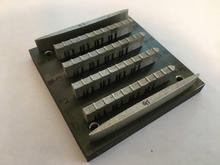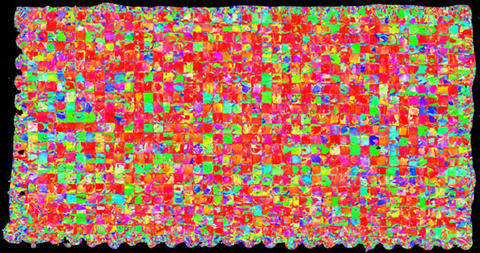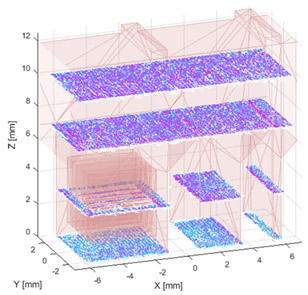
AM Bench 2025 Conference
AM Bench 2025 will be held in conjunction with ASME's International Mechanical Engineering Congress & Exposition (IMECE) as a separate track (Track 16) which will be held in the Renasant Convention Center in Memphis, TN on November 16-20, 2025. Thus, anyone who attends AM Bench 2025 will also be able to attend the other IMECE 2025 talks and activities. All the AM Bench conference features you are familiar with will be retained, including:
- Four full days
- Combined (non-parallel) morning sessions with AM Bench Plenary modeling and benchmark presentations
- Parallel afternoon sessions with invited and contributed presentations
- Combined discussion sessions where modeling and measurement issues can be discussed
- An embedded workshop during the last afternoon on additive manufacturing standards
- An awards dinner on November 19, 2025 for presenting the award plaques for the AM Bench Challenge Problems (there will be a separate registration charge for this event)
- Special issue journal publications from invited AM Bench participants
Abstract submission and conference registration will be handled through the IMECE 2025 website. Please note that the deadline for submitting an abstract is July 15, 2025.
We look forward to seeing you at AM Bench 2025 at IMECE!
AM Bench 2025 Challenge Problem Descriptions Released!
After more than two years of work (starting well before the AM Bench 2022 conference), descriptions of the AM Bench 2025 benchmark measurements and challenge problems have been released. For AM Bench 2018 and 2022, we provided just three months between the release of the challenge problems and the submission deadline for modeling solutions. At the AM Bench 2022 conference, modelers requested a much longer time frame and we have accommodated this request. Here is the schedule for the AM Bench 2025 challenge problems:
| Short description of benchmarks and challenge problems released | September 30, 2024 |
| Detailed descriptions of challenge problems released with calibration data, submission templates, and submission instructions | March 5, 2025 |
| Informational webinars held for all challenge problems | March 13-14, 2025 |
| Submission deadline for challenge problem solutions - closed | August 29, 2025 |
| Challenge problem solutions released | Early September, 2025 |
We are pleased to report that the extensive 2022 benchmark measurements, challenge problems for the modeling community, and conference (AM Bench 2022) were completed successfully. We thank our many collaborators from 10 NIST divisions and 20 partner organizations for their hard work and dedication in making these successes possible. In addition to 7 sets of regularly scheduled metal AM and polymer AM benchmarks, we completed our first asynchronous set of benchmarks that is not tied to the regular benchmark schedule. Such asynchronous benchmarks provide increased flexibility in supporting the needs of the modeling community. Our new AM Bench 2022 data systems are also online and we are expanding the sets of available data and metadata as quickly as possible. Lastly, we are working closely with our measurement partners and the broader AM community to develop plans for future sets of benchmark measurements and challenge problems, with the next regular round scheduled for 2025.
what is am bench?

AM Bench is a NIST-led organization that provides a continuing series of AM benchmark measurements, challenge problems, and conferences with the primary goal of enabling modelers to test their simulations against rigorous, highly controlled additive manufacturing benchmark measurement data. All AM Bench data are permanently archived for public use using comprehensive, custom data management systems. The first round of benchmark measurements, challenge problems, and conference (AM Bench 2018) were completed in 2018 and the second round was completed in 2022, following a one-year delay caused by the COVID-19 pandemic. AM Bench follows a nominal 3-year cycle with the next set of measurements, challenge problems, and conference scheduled for completion in 2025. Additional asynchronous benchmarks are also being planned.
AM Bench partners broadly with the AM research community. If you have ideas for future AM benchmarks, or if you wish to partner with us on conducting such benchmarks, please contact the lead AM Bench organizers listed below.
AM Bench Mission: To promote US innovation and industrial competitiveness in AM by providing open and accessible benchmark measurement data for guiding and validating predictive AM simulations across the full range of industrially relevant AM processes and materials.
Scope
AM Bench was established to develop benchmark measurements for all AM processes and materials. However, the requirement for highly controlled and quantitative measurements severely limits the number of benchmark measurements that can be conducted in any given test cycle. Thus, one of the key challenges faced by AM Bench is to select benchmark measurements, processes, and materials that are both technically feasible and have the highest impact on the AM community. We thank the AM Bench Scientific Committee for the valuable advice they provided in selecting the final materials and processes that were used for AM Bench 2018 and AM Bench 2022.

2022 BENCHMARKS
The 2022 benchmarks include both metals AM and polymers AM. For metals, 3 sets of benchmarks focused on laser powder bed fusion (LPBF) of the nickel-based superalloy 718 and 2 sets of benchmarks included follow-on mechanical performance and microstructure measurements for the 2018 LPBF studies using the nickel-based superalloy 625. Taken together, these benchmarks cover the full processing-structure-properties range, including feedstock characterization, in situ measurements during the build process, heat treatments, 2D and 3D microstructure characterization, measurements of residual strains and part deflection, and mechanical behavior measurements. For polymers, one set of benchmarks focused on material extrusion (MatEx) of polycarbonate test objects, and another set of benchmarks focused on vat photopolymerization measurements. Finally, an asynchronous set of benchmark measurements was completed in early 2022 and focused on melt pool and laser coupling dynamics during high-power laser interactions with Ti-alloy and Al-alloy bare metal surfaces. Links to descriptions of the 2022 benchmark measurements, challenge problems, and results are provided on the left sidebar.
2018 BENCHMARKS
The 2018 benchmarks included both metals AM and polymers AM. For metals, the focus was on LPBF of both a nickel-based superalloy, 625, and a martensitic, precipitation-hardenable stainless steel, 15-5. Both 3-D builds and single laser tracks on bare metal plates were conducted. For polymers, the focus was on thermoplastic AM technologies, and we identified the two most widely used approaches for AM-Bench: MatEx and LPBF, also sometimes referred to as selective laser sintering (SLS). The MatEx benchmark focused on polycarbonate and the LPBF focused on polyamide 12 (nylon 12). Links to descriptions of the 2018 benchmark measurements, challenge problems, and results are provided on the left sidebar.
CHALLENGE PROBLEMS
The AM Bench benchmarks include blind challenge problems to the AM modeling community where AM modelers are asked to predict the AM Bench measurement results. These challenge problems have proven to be extremely popular, with 138 submissions to AM Bench challenge problems in 2022. The award winners may be found within the Awards section of this website.

Conference
With a three-year cycle time, AM Bench holds a conference associated with the benchmark measurements and challenge problems. This conference provides a venue where modelers and experimentalists can come together to discuss what works, what doesn’t work, and how we can fix what doesn’t work. The first AM Bench conference, AM Bench 2018, was hosted by NIST at their Gaithersburg, MD campus during the week of June 18, 2018. The second conference, AM Bench 2022, was held in Bethesda, MD during the week of August 15, 2022. The TMS handled the conference logistics for both conferences and the 2018 conference proceedings are published in the TMS archival publication, Integrating Materials and Manufacturing Innovation (IMMI). These proceedings include both the AM Bench measurement results and invited papers from the AM Bench modeling community. The 2022 conference proceedings were also published through IMMI.
Contacts
NIST Organizing Committee Co-Chairs
-
(301) 975-6032
-
(301) 975-2265

